Tegu and Giant Ameiva
Tegus are similar in appearance to the monitor lizards of Africa and Australasia, and occupy much the same role - being primarily terrestrial, and an opportunistic predator of eggs, fruits, insect, small vertebrates or whatever else they can find. They have a long pointed head, solid muscular build, and especially powerful jaws. These jaws can exert pressure up to 1000N - which is sufficient for a bite to potentially crush human fingers. They have beaded skin and a pattern of repeating horizontal bands along the length of their body. They also have a long forked tongue which you can sometimes see them using to help find potential meal. Aside from size, the main distinction between the two species is their colour as indicated in their names - the Golden Tegu has yellow highlights instead of white. There is also a Red Tegu found in western Argentina and Paraguay, and a Blue Tegu which appears to be a rarer mutation of the Black and White Tegu. However, for their first few months, hatchlings will often appear emerald green.
A Black and White Tegu (Tupinambis merianae), also known as the the Argentine Tegu. This is the biggest Tegu species reaching up to 140 cm in length. Photo: Shutterstock/Rich Lindie.
Behaviour and Habitat
Tegus inhabit forests, natural grasslands and fields - often spending long periods of time in underground burrows which they dig out with their strong claws. Besides natural areas they can also adapt to open areas created by agriculture, construction zones and metropolitan parks. In fact, they're happy pretty anywhere so long as they have access to food, a little water and shelter. For this reason, they've been able to expand outside there native range - with escaped pets taking up residence in Florida among other places. They're opportunistic and omnivorous - feeding on fruits, insects, small rodents, birds, frogs, eggs and carrion. In areas around human habitation, and where natural food sources are lacking, they have a reputation for raiding chicken coops - stealing eggs and baby chicks. In coolest areas of their range (e.g. northern Argentina), Tegu enter a short period of hibernation from June to September.
Although primarily terrestrial lizards, dictated by their large size and weight, tegus will sometimes climb small trees and rocks. They're also accomplished swimmers, able to remain submerged for around 20 minutes. When confronted, tegus will first try to flee, but can turn aggressive if cornered - delivering painful bites and sharp blows with their whip-like tail. By contrast, those born in captivity and kept as pets can be quite docile, intelligent, and even actively seeking out social interaction with their carers.
Reproduction
The mating period occurs in the early spring, from late-September through October. During this period the males mark their territories by dragging their scent glands, located on the inner thighs of their hind legs along the ground. At this time, courtship occurs between the males and females, as well as battles between males to protect their territories, or competing for access to females. Female tegus build burrow in which to lay their eggs, or take advantage of the many termite mounds scattered across areas such as the Pantanal. The females generally lay around 20-35 eggs which incubate for a period of around 75 days. The hatchlings have a greenish coloration which fades as they mature. These hatchlings emerge in late spring or early summer, being independent and able to look after themselves.
Conservation Threats
Because of their adaptability and capacity to live near areas of human habitation, Tegus are categorised on the IUCN Red List as being of Least Concern. Despite approximately a million animals being harvested annually for food and leather in some areas of their range (primarily in northern Argentina) this appears sustainable so long as the environment and numbers can continue to be maintained.
Quick Facts
- When found in the wild, tegus will initially freeze motionless, with their head held up high. They will then make a sudden dash for escape.
- In parks and areas of human habitation, tegus feed on leftover scape of processed food, such as crackers, chips and cheese. However this causes health issues as their metabolism isn't able to cope with this diet.
- Tegus are among the most commercially exploited reptiles in the world. Up to a million are harvested annually in Argentina for their hide and meat - being a traditional source of protein and income in indigenous communities. Most of the animals are wild-caught.
- Tegu hides are popular in the US, where the leather is used for shoes and cowboy boots.
- Tegus are increasingly popular as pets. These were originally all wild-caught but there are now several breeders established in the US and Europe, supplying these markets with a range of different species.
Tegu
Scientific Name
Local Name
Description
Tupinambis teguixin or
Tupinambis merianae
Teiú
Large heavy-bodied lizard with long pointed head and muscular build. Beaded skin and a pattern of repeating horizontal bands.

Giant Ameiva
Scientific Name
Ameiva Ameiva
Local Name
Calango Verde or
Bico-Doce
Description
Medium-sized lizard, about 40-50 cm in length. Head and shoulders are mottled grey, with bright green body.
The Tegu ranges across much of South America. In the northern part it's range the predominant species is the Golden Tegu (Tupinambis teguixin). The southern part of the range is predominantly the Black and White Tegu (Tupinambis merianae). The Pantanal region contains both species.
The Giant Ameiva (Ameiva Ameiva) ranges from Panama to northern Argentina. However, populations have expanded into Central America, with and introduced population also in Florida.
Giant Ameiva
This is another lizard commonly seen in the Pantanal, and is related to the Tegu. Despite its name, the Giant Ameiva (ameiva ameiva) is considerably smaller than the tegu - with adults measuring around 45 cm in length. Adult males and females are the same colour - although males are a more vibrant green colour and slightly bigger in size. Juvenile ameiva differ in appearance - starting off brown, with dark lateral striping, before transitioning to their green adult colours. Ameiva have a streamlined body, pointed head, slightly forked tongue, and muscular hind legs. Although the brazilian term "calango" is used generically to describe a wide range of small tropical lizards, the name calango-verde is the term most frequently applied for this species in Brazil, along with the name lagarto bico-doce. In english, these lizards are sometimes also referred to as Amazon Racerunners.
An adult Giant Ameiva (Ameiva ameiva) basking in the Pantanal. These are known locally as Calango-verde or Bico-Doce. Credit: Andrew Mercer. The alternative coloration of the juveniles can be seen below. Credit: D. Gordon E. Robertson.
Behaviour and Habitat
The ameiva has one of the widest distributions of New World tropical lizards - ranging from Panama in Central America through into the Amazon and down, east of the Andes as far as northern Argentina and Paraguay. This range includes all of Brazil, and the Pantanal. Ameiva can inhabit a variety of ecosystems including wetlands, rainforest, arid scrublands and metropolitan parks. They're timid by nature, and quick to flee at the first sign of any disturbance. As with tegus, ameiva are terrestrial burrowing lizards which spend most of their time on (or under) the ground. They're most commonly found sheltering under logs and in leaf litter - but they can also climb onto rocks and the lower branches of trees if this helps them find food or a good basking spot. They're active foragers - with their diet consisting primarily of insects, spiders, snails and small amphibians. However, they've also been known to eat other smaller species of lizard. Their prey becomes larger as they grow. In turn, ameiva are preyed upon by snakes and birds. And, like many other lizards, they can lose their tails when grabbed - with this distracting or satisfying their predator while the ameiva makes a quick getaway. Ameiva are active primarily during the hottest part of the day, in the late morning and early afternoon.
Reproduction
Ameiva ameiva is thought to reach sexual maturity around eight months after hatching. As with tegu, to whom they are closely related, ameiva have glands on their inner thighs which they can drag on the ground to emit a scent or pheromones that mark their territory. These are also thought to play a role to signal mating.
There is no strict breeding season for ameiva, and it appears that this may be based on the specific environment in which they live. In some instances this may be year-round. However when mating occurs, the males mark their territory and protect it - as well as competing for access to females. The females appear to emit a pheromone which attracts and excite the males. Generally the large males have the most breeding success due to them being better able to intimidate and chase off smaller males. After mating, females only carry their eggs for a short period, and tend to stay in their burrows during this time. Once these eggs are laid (clutch size is 4-12), the incubation period lasts around 5 months. Within the Pantanal, hatchlings generally emerge at the beginning of the rainy season - which coincides with the period of peak food availability. Assuming the hatchlings can escape predation, their total lifespan is 3-4 years.
Conservation and Threats
Unlike most species, deforestation and land clearing appears to increase the amount of suitable habitat available to ameivas, thanks to their tolerance for dry and open landscapes. As such, it may only have colonized Panama and Costa Rica recently, following the development of large banana farms. The species has also ben inadvertently introduced into southern Florida where it appears to be thriving. Unfortunately, ameivas are known carriers of the bacteria Salmonella, including strains that can infect humans - and therefore should be treated with caution.




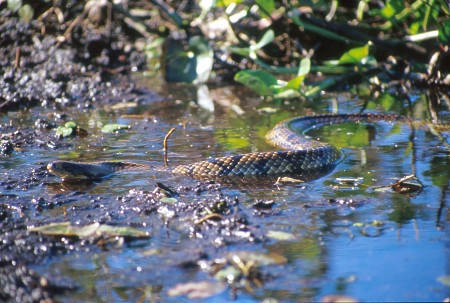
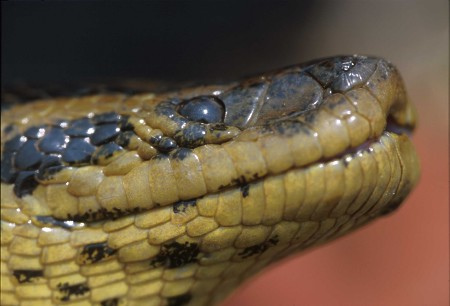


Banner image: Tegu lizard (Shutterstock/AJancso).
Footer images: Jacaré; Anaconda; False Water Cobra (Andrew Mercer)
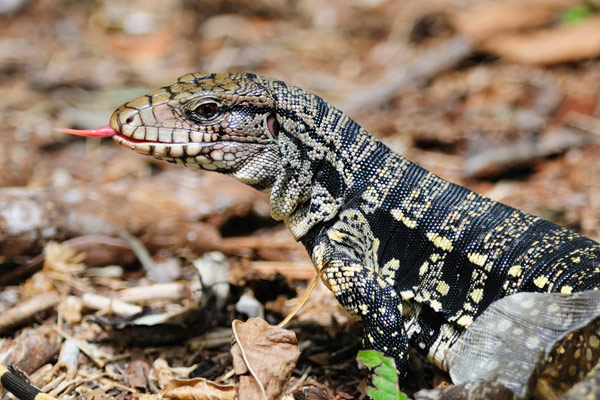
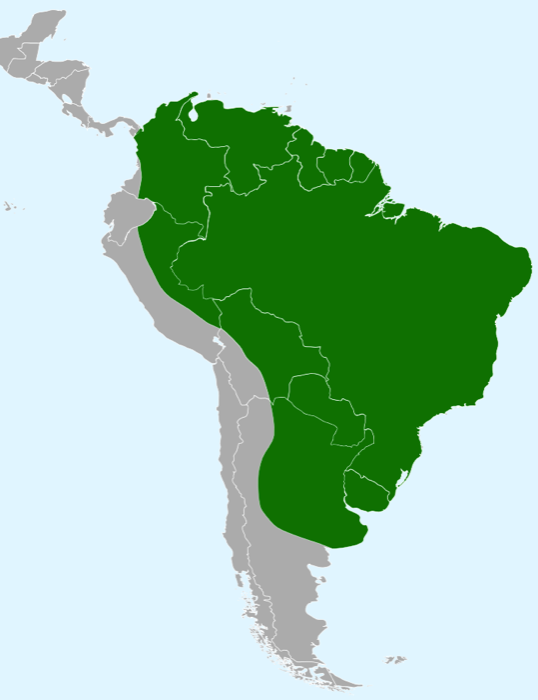
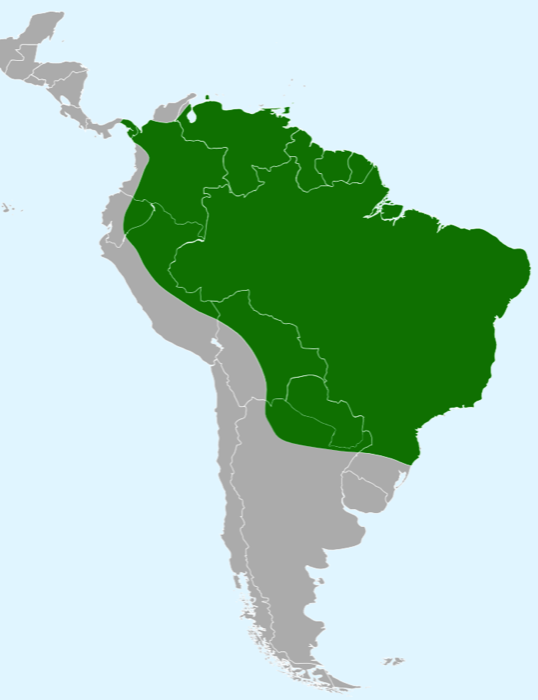
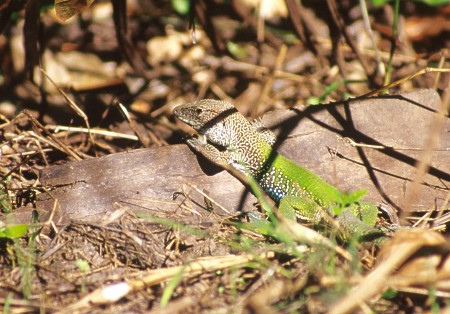
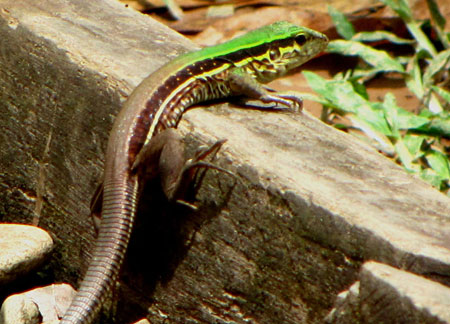
Pantanal Escapes